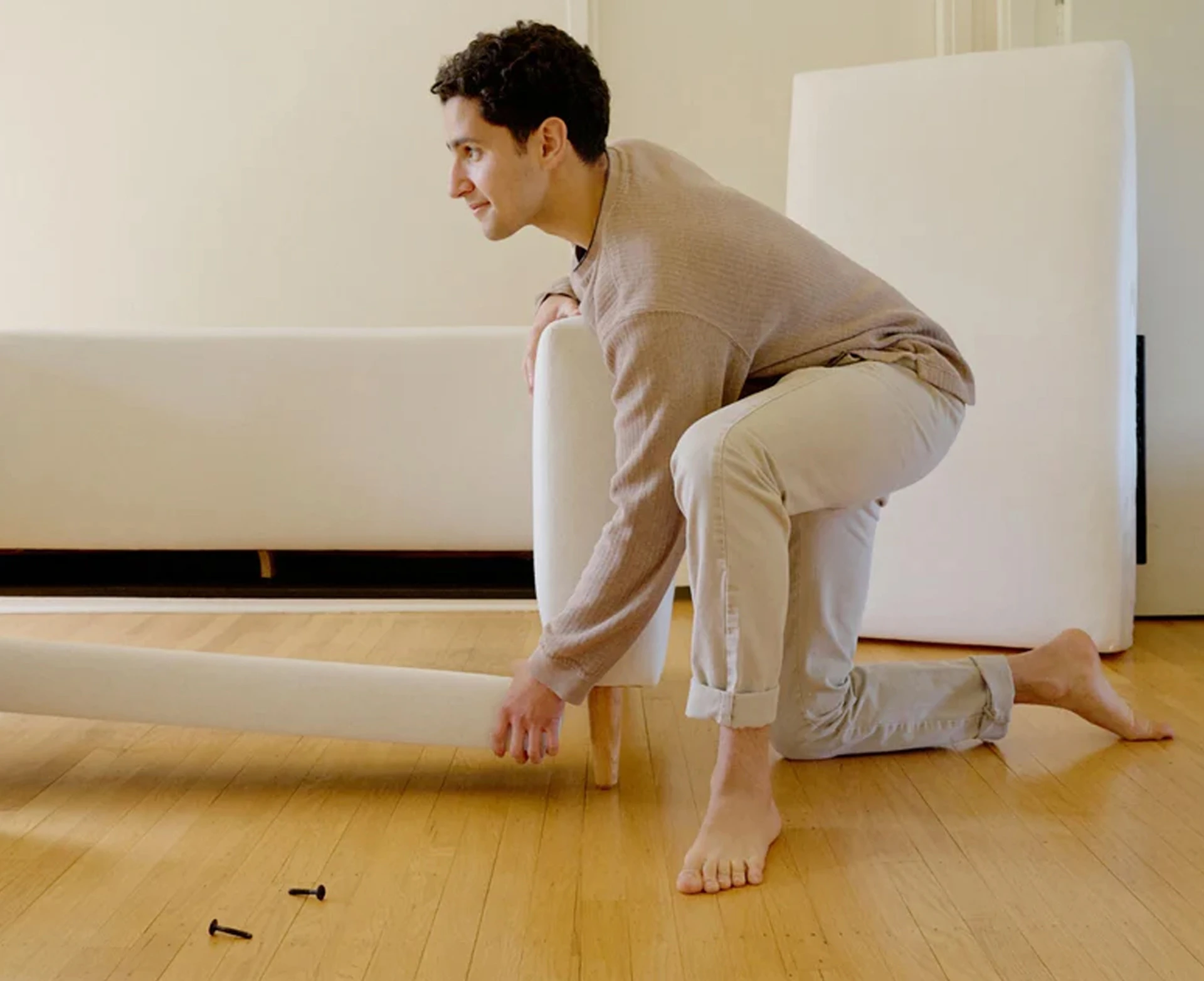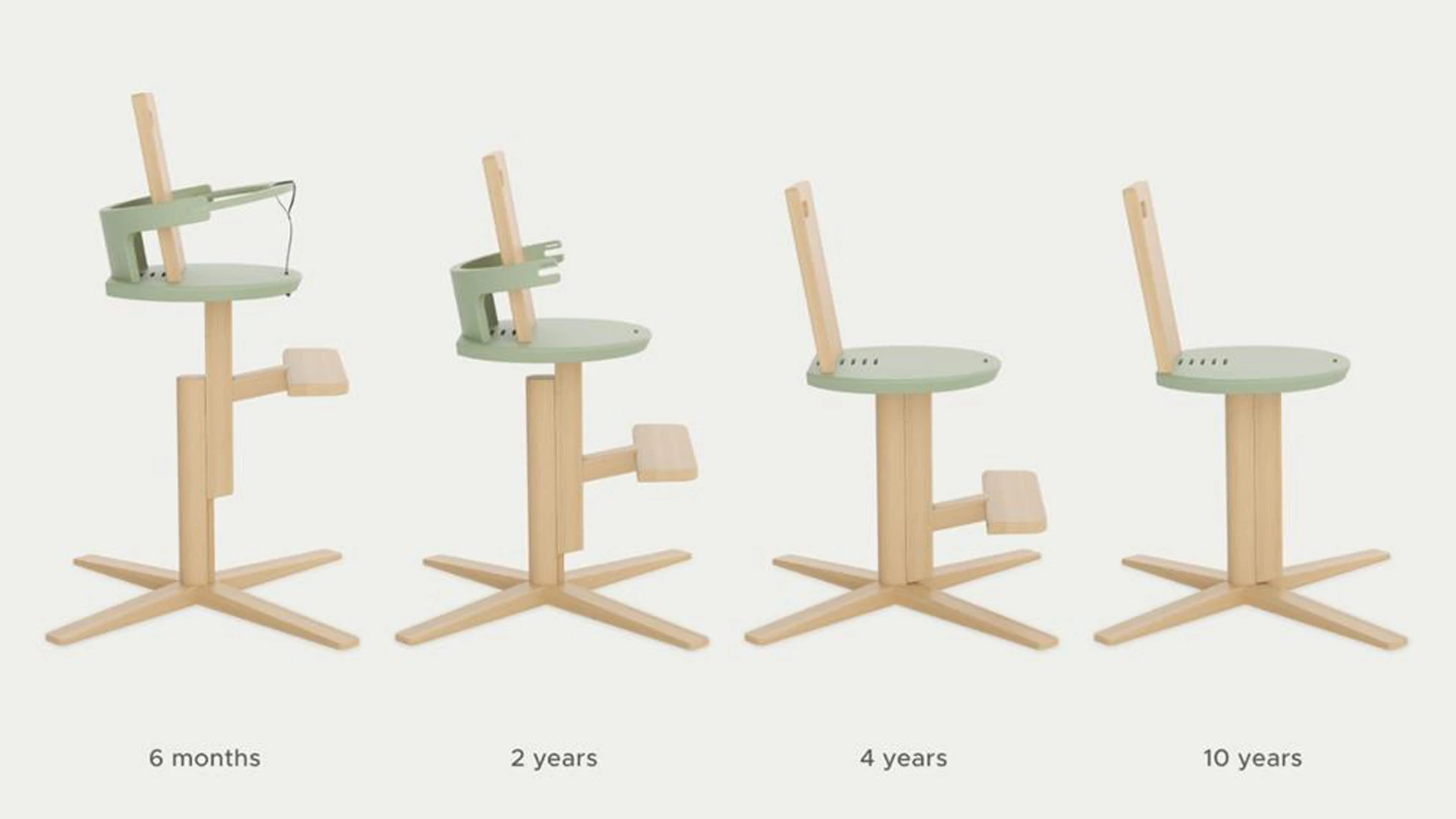
Design for Longevity: Circular Economy & Furniture
29-Nov-2024
In nature, there is no such thing as waste - everything cycles, serving as a resource to nourish a species or enrich an ecosystem. The circular economy's second principle - ‘keeping materials and products in use’ - is inspired by these natural cycles. Our goal is to rethink design and business models to create goods that can evolve, be repaired, and continually find new purposes.
In this article, we dive deep into the principle of keeping materials and products in use. We’ll share design strategies, and real-world furniture business models to illustrate theory-in-action within the furniture industry.
A note before you jump into the next section - if you haven't yet read our earlier article on the first principle of the circular economy, Designing Out Waste and Pollution, you’ll likely find it helpful before diving into the second principle.
Understanding the 2nd Principle: ‘Keeping Materials and Products in Use’
The second principle of the circular economy focuses on continuously reusing and repurposing materials and products. This approach aims to retain their value for as long as possible, minimize waste, and reduce the need to extract new raw materials in a world with finite resources.
In practical terms, this means designing products to be more durable, modular and adaptable to users' changing needs. Materials like wood, metal and glass, for example, can often be reused through processes such as refurbishment and remanufacturing. You can learn more about these, and dozens of other circular approaches to furniture, in our Circular Design Glossary & Action Guide. Additionally, the circular economy’s 2nd principle also encourages development of new business models - such as furniture rental or sharing services - that prioritize access over ownership.
Four strategies for extending the life of materials and products in the furniture Industry
The furniture industry is the world's third-largest consumer of wood. Meanwhile, deforestation is a major contributor to climate change - second only to burning fossil fuels. Deforestation also drives biodiversity loss and threatens the livelihoods of 1.6 billion people, including many indigenous communities.
Wood is prized as a durable biomaterial. Rather than clear-cutting forests, the circular alternative to procuring wood is responsibly sourcing, recycling or salvaging it. Wood salvaged today from a 150-year-old house can be turned, for example, into a bookcase, and in another 100 years, turned into wood pellets for use in sofa legs. And then in another 50 years could be processed into paper … and on and on. As a biomaterial, wood could return to Earth at its latest stage as long as it is free of toxic glues or finishes in its useful life.
Post-consumer furniture waste is another issue to address. According to the U.S. Census Bureau, typical Americans move 11.7 times in their lives. Making a sofa repairable, modular, and easy to disassemble or reupholster allows users to adapt their sofas to their changing needs, tastes, and homes.
What if it were easy to enlarge a sectional sofa when a family grows and to return a sofa extension when the kids move out? What if sofa upholstery were designed to be upgraded, or repaired with no fuss?
Let's look at examples of four different approaches to incorporating the principle of ‘Keeping Materials and Products in Use’ in furniture design - reclaiming, repurposing and repairing; designing for adaptability and longevity; transitioning from products to services; and growing the second-hand market.
1) RECLAIMING, REPURPOSING AND REPAIRING
Instead of looking for new materials and extracting additional resources from the Earth - practices contributing to deforestation and pollution - furniture designers and companies focus on reclaiming and repurposing existing materials. They strive to reintroduce these materials into the industry and repair products to extend their lifespan.

Urban Wood Project - Room & Board
In 2017, Room & Board teamed up with the U.S. Department of Agriculture (USDA) Forest Service to launch the Urban Wood Project. The project salvages wood from U.S. cities, including from homes and other structures slated for demolition, and trees removed due to disease, maintenance, or storm damage. Room & Board then turns them into sustainable furniture and decor. The Urban Wood Project started in Baltimore and has expanded to Detroit, Minneapolis, New York City, Sacramento, and Southern California, with more localities on the horizon.

Remembrance Project - Subin Seol
Another innovative example of keeping materials and products in use comes from Korean furniture designer Subin Seol. She turns handrails from Fawley Power Station's landmark demolished plant into dining chairs and coffee tables. By embracing the handrails' irregular shape, Seol’s furniture pieces retain the building's brutalist aesthetic, celebrating its heritage.

Sabai Design’s "Repair Don't Replace" service helps clients refresh their furniture through minor repairs or the replacement of specific components - thus extending the furniture’s lifecycle and reducing post-consumer waste.
2) DESIGNING FOR ADAPTABILITY AND LONGEVITY
A growing number of companies are embracing the second principle of the circular economy by designing products with a priority on adaptability and longevity in mind. Modular sofas, for example, that can be reconfigured, reupholstered, or have readily replaceable legs, cushions and other components are more likely to stay in use longer because they allow users to repair minor damage and respond flexibly to changing living/furniture needs.
A great example is the COSTUME modular sofa system designed by Stefan Diez for Magis. This sofa system comprises one unit that can be interlocked in various arrangements or extended with armrests or a pouf. Each sofa can be expanded by adding modules, and old parts can be exchanged for new ones. Thanks to elastic loops, the COSTUME modular sofa can be easily dressed and undressed to wash or replace its covering.

Hoek Furniture challenged itself to design a "quick-assembly furniture system that empowers people to transform their space in seconds," according to co-founders Conor Coghlan and Brian Chun. Every piece of furniture is produced without adhesives, allowing for easy replacement or recycling. In addition, Hoek’s furniture can be readily disassembled, creating an ultra-slim flatpack that is easy to store or transport. "We need to stop manufacturers from producing cheaply made, one-use furniture that is not designed with longevity in mind,” notes Coghlan, “and inevitably ends up getting thrown away frequently.”


A third great example - tackling durability within the children’s furniture market - is Rimarket. After their son's birth, Rimarket co-founders Matej Košir and his wife Maruša set out to create Froc, an entirely new type of wooden chair that would last an entire childhood - from 6 months to 10 years old. This adjustable high chair for toddlers and children is crafted from local, sustainable beech wood and is created in collaboration with design agency Gigodesign.
3) TRANSITIONING FROM PRODUCTS TO SERVICES
A third approach to incorporating the principle of ‘Keeping Materials and Products in Use’ into furniture design taps the recent rise in the sharing economy (think: Uber and AirBNB). Rather than relying only on selling, numerous new businesses are offering products through rental, subscription, sharing or leasing. Some furniture rental companies, for instance, offer pieces on a lease basis, where furniture items are returned, cleaned and rented out again or broken down into reusable components.

Furniture as a Service – Ahrend
Furniture companies like Ahrend have introduced “Furniture as a Service,” a subscription-based model allowing customers to rent rather than purchase furniture. This model reduces the need for new production and helps maintain the value of existing items. When a piece no longer meets a customer’s needs, it is returned to the company, refurbished, and made available to another user. ZZ Driggs is another example of ‘furniture as a service,’ with a focus on residential use in the USA.

Beyond product design, keeping materials in use can tap into a shift in consumer and business mindset that encourages access over ownership. This reflects a reality that, even with furniture, a certain segment of customers only require access to - the opportunity to use - a furniture product for a short period. After that, they can return the product to the company and onto new users.
4) SECONDHAND FURNITURE MARKET
The rise in online secondhand furniture markets reflects a fourth approach to ‘Keeping Materials and Products in Use.’ Online platforms allow people to buy, sell, and exchange high-quality used furniture, keeping these items out of landfills - while helping transform consumer behavior patterns and consciousness.
Sabai Design is a pioneer in introducing a furniture buyback program in the U.S., allowing customers to trade in their pre-owned Sabai furniture. In the same spirit, AptDeco is an online platform for buying and selling pre-owned furniture across the United States. According to AptDeco’s website, the collective influence of their business and community efforts to date has led to the reduction of approximately 15,179,491 pounds of CO2 emissions, the equivalent of taking 5,517,607 vehicles off the road and planting 1,203,806 trees. The website also provides insights into how much CO2 consumers can save when selling their furniture or opting for second-hand items.


This year, IKEA launched a peer-to-peer resale platform for buying and selling pre-owned IKEA furniture and furnishings. "We hope to encourage waste reduction and prolonged life of our products,” says the brand. This includes offering services for customers such as buying back products that they no longer need, providing assembly parts, and investing in recycling companies like RetourMatras.

CONCLUSION
At present, according to the U.S. Environmental Protection Agency (EPA), furniture and furnishings as part of municipal solid waste reached 12.1 million tons in 2018, a significant increase from 2.2 million tons in 1960. Wood comprised the largest material category, followed by ferrous metals. Millions of functional furniture pieces are discarded each year. It’s essential to recognize that waste does not simply disappear; it relocates and almost always leads to negative environmental impacts.
By adopting the second principle of circularity - ‘Keeping Materials and Products in Use’ - the furniture industry can do its part in fostering a more sustainable future - in which resource conservation becomes the norm. We look forward to hearing about your company’s experience as it experiments with or adopts the four strategies we’ve illustrated above.
READ other articles in the series - Furniture and Circularity: A Primer.
Sources:
Chahuán-Jiménez, K., Rubilar-Torrealba, R., Rubilar-Torrealba, R., De la Fuente-Mella, H., & Elórtegui-Gómez, C. (2024). Unraveling the Complex Interplay of Sustainability, Investments, and Economic Indicators. Sustainability, 16(1), 3.
Weerapperuma, U. (2023). Integrating Circular Economy Principles in Modular Construction to Enhance Sustainability. Sustainability, 15(15), 11730.
One in Ten Europeans Were Conceived in IKEA Beds - The Atlantic. https://www.theatlantic.com/international/archive/2011/09/one-ten-europeans-were-conceived-ikea-beds/337380/
Climate Activist Consumers
https://meblfurniture.com/blog/Climate-Activist-Consumers
Circulate products and materials - Ellen MacArthur Foundation
https://www.ellenmacarthurfoundation.org/circulate-products-and-materials
ArtCenter Gallery - Xin (Stacy) Yin. https://cms.artcenter.edu/gallery/detail/6034339dfc31764f7d8b4567/17512?ret=%2Facademics%2Fstudent-gallery%2Fundergraduate-degrees%2Fspatial-experience-design.html%3F
